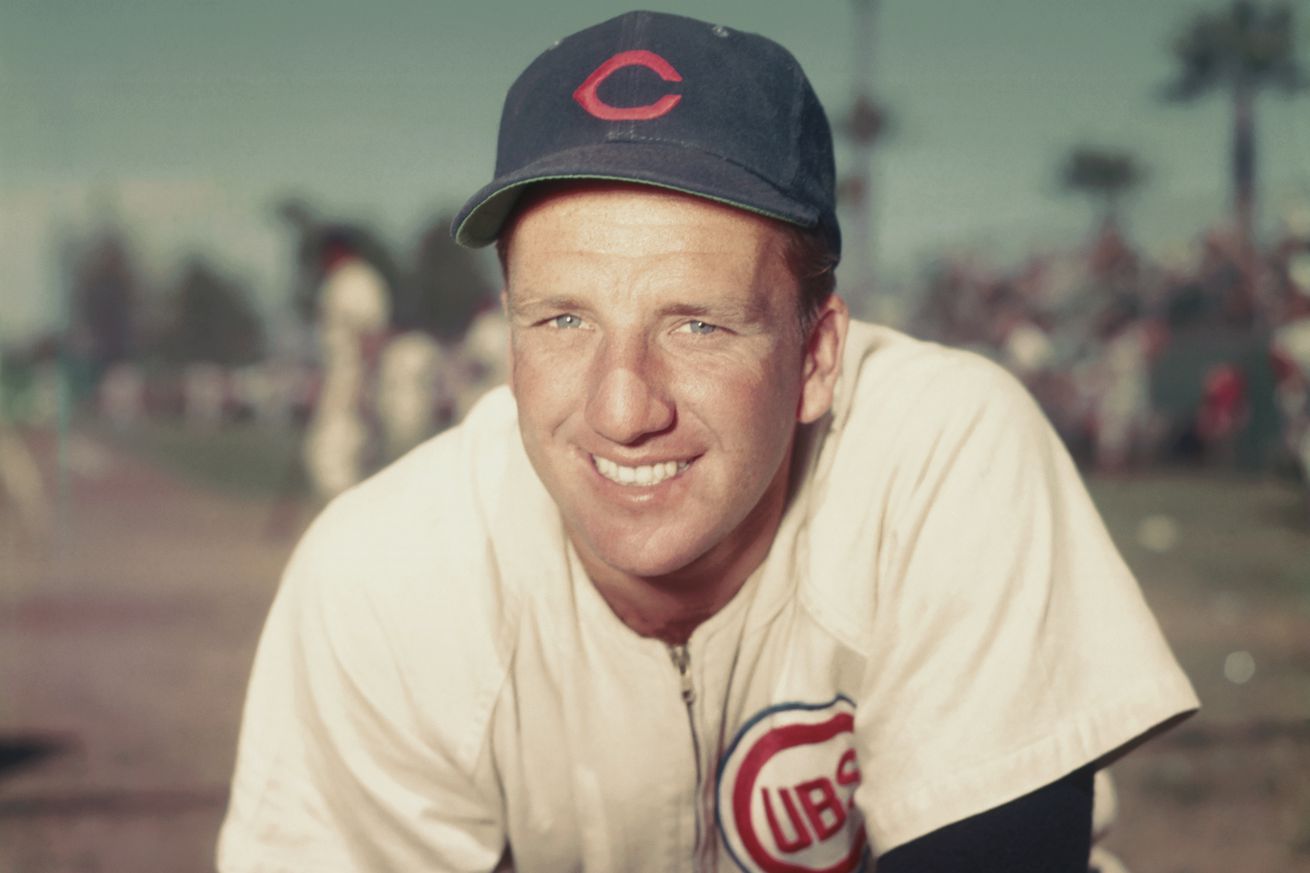
Another quiet year for Cubs deals.
The biggest Cubs news of 1953, though they didn’t know it at the time, was the MLB debut of a skinny, 22-year-old shortstop named Ernie Banks on Sept. 19. Banks would go 0-for-4 in that debut game, which the Cubs lost 16-4. Eventually he’d homer a couple of times that September, beginning a Hall of Fame career.
That didn’t help the team, which went 65-89, avoiding a 90-loss season only by winning the season’s last two games.
There were only two player-for-player deals in 1953, one of them a major one.
June 4: Acquired Joe Garagiola, Ralph Kiner, George Metkovich and Howie Pollet from the Pirates for Bob Addis, Toby Atwell, George Freese, Gene Hermanski, Bob Schultz, Preston Ward and $150,000
This is the sort of deal that was popular for a time in the 1950s. This one involved 10 (!) players and a sum that’s roughly equivalent to $1.8 million today. (Today, you’d only include that much cash in a trade to offset a contract. That wasn’t necessary back then.)
The centerpiece of this trade, obviously, was Kiner, who had led the major leagues in home runs six years in a row (and the NL for seven). It appeared Kiner might be on the way to getting close to Babe Ruth’s home run record — he’d hit 294 home runs by age 29.
Kiner had good years for the Cubs, but back issues kept him out of many games and he was shipped to Cleveland after ‘54. He did give the Cubs 4.6 bWAR in a season and a half, and 50 home runs.
Garagiola hit .276/.365/.381 with six home runs in 137 games for the Cubs (1.0 bWAR) through ‘54, then was let go to the Giants on waivers. Of course, he went on to a long broadcasting career.
Metkovich (age 32 when the Cubs got him) and Pollet (also 32) were perfect examples of guys who had good careers when younger, and the Cubs got the leftovers. Pollet, in particular, had been a star on a couple of Cardinals pennant winners in the 1940s, but with the Cubs had a 4.19 ERA in 69 games before he was released at the end of 1955.
The thing is, the Cubs got the better of this deal because only four of the six players they sent to the Pirates played a single game for them after 1953, and only one had any significant time there. That was Ward, a first baseman who batted .240/.326/.368 with 21 home runs in 305 games for Pittsburgh. Then they traded him to Cleveland for a backup catcher named Hank Foiles.
The others were bit players, or didn’t play well, or both.
The Cubs got the best of this trade, which was completed while the Cubs were playing the Pirates in Pittsburgh. Kiner played for the Pirates against the Cubs June 3 and went 0-for-3 in a 1-0 Pirates win. On June 4 he played for the Cubs and went 1-for-4 as the Cubs lost to the Bucs 6-1.
Edward Burns of the Tribune noted one significant reason for this deal being made:
The extent to which Kiner’s big bat will help the Cubs climb out of the cellar is considered speculative. How much he will help the Wrigley Field gate, already off 80,000, and divert the thoughts of the fans of the contrast between the Cubs and the neighboring Milwaukee Braves has not been publicly calculated. Kiner has been a popular athlete thru (sic) his entire career and is sure to boom sagging Cub attendance.
At the time of this deal, the Cubs were 12-26, in last place, 14 games out of first place. Meanwhile, the Braves had become an early sensation in the National League, in first place in early June and drawing large crowds in Milwaukee. It was felt by some in the Cubs organization that the Braves were siphoning off some Cubs fans from the northern suburbs, and also from Milwaukee itself, where many had been Cubs fans before the Braves moved there.
The Kiner move didn’t work for that purpose. The Braves led MLB in attendance in 1953, averaging 23,119 per game. (That was considered very good back in the day, and also, that was turnstile count, not tickets sold.) The Cubs ranked 11th at 9,918 per game, a total of just 763,658 after drawing a million-plus seven of the previous eight years.
The Cubs wouldn’t sell a million tickets again until 1968.
June 12: Acquired Bubba Church from the Redlegs for Fred Baczewski and Bob Kelly
The trade deadline in the 1950s (and in fact, until 1987) was June 15, thus these two deals made close to the deadline.
Church posted a 5.59 ERA in three Cubs seasons, good for exactly replacement value of 0.0 bWAR.
Baczewski, who had pitched in just nine games for the Cubs, pitched well for the Reds in ‘54, not as well in ‘55. He hung around the minor leagues as late as 1961.
Kelly pitched briefly for the Reds in ‘53 and then was in the minors for several years before resurfacing for them in ‘58. He is still living — aged 97. At the time of this post, that made him the eighth-oldest living former MLB player, but NOT the oldest living former Cub. That’s Bobby Shantz, who is 99 and who pitched briefly for the Cubs in 1964.
The Cubs get a C for these, largely for the acquisition of Kiner.
